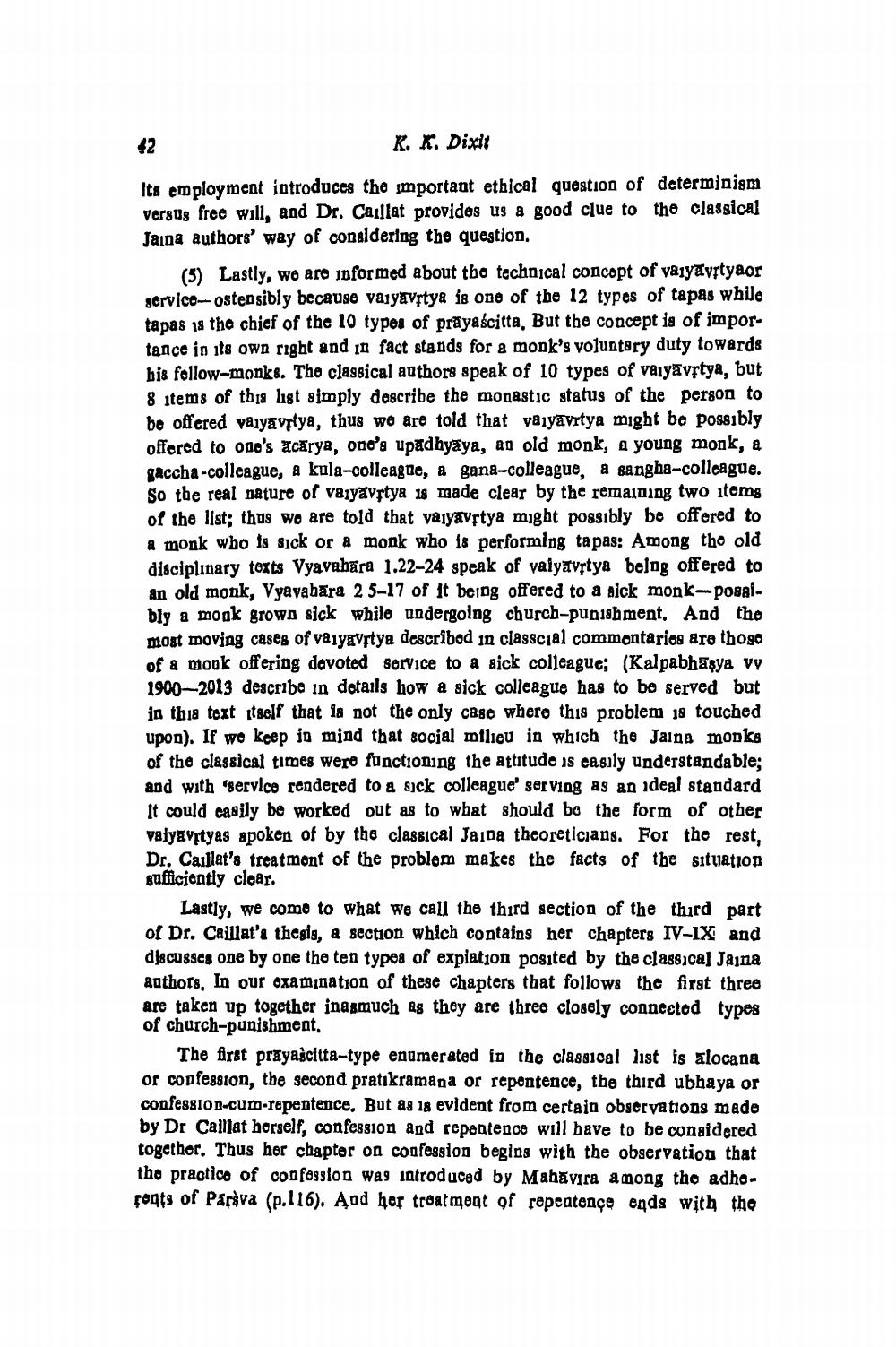________________
K. K. Dixit
Its employment introduces the important ethical question of determinism versus free will, and Dr. Caillat provides us a good clue to the classical Jaina authors' way of considering the question,
(5) Lastly, we are informed about the technical concopt of vaiyavrtyaor service-osteosibly because vayavrtya is one of the 12 types of tapas while tapas 18 the chief of the 10 types of prayascitta. But the concept is of importance in its own right and in fact stands for a monk's voluntary duty towards bis fellow-monks. The classical authors speak of 10 types of vaiyavftya, but 8 items of this list simply describe the monastic status of the person to be offered vaiyavrtya, thus we are told that vaiyavrtya might be possibly offered to ono's acārya, ono's upadhyāya, an old monk, a young monk, & gaccha-colleague, a kula-colleague, a gana-colleague, a sangha-colleague. So the real nature of vaiyavştya 18 made clear by the remaining two items of the list; thus we are told that vaiyavrtya might possibly be offered to a monk who is sick or a monk who 18 performing tapas: Among the old disciplinary texts Vyavahāra 1.22-24 speak of valyavrtya bolng offered to an old monk, Vyavabara 2 5–17 of it being offered to a sick monk-posalbly a mook grows sick while undergoing church-punishment. And the most moving cases of vaiyavrtya described in classcial commentarios are thogo of a mouk offering devoted service to a sick colleague; (Kalpabhāşya vy 1900-2013 describe in details how a sick colleague has to be served but in this text itself that is not the only case where this problem 18 touched upon). If we keep in mind that social milieu in which the Jaina monks of the classical times were functioning the attitude is easily understandable; and with service rendered to a sick colleague' serving as an ideal standard It could casily be worked out as to what should be the form of other valyavrtyas spoken of by the classical Jaina theoreticians. For the rest, Dr. Caillat's treatmont of the problem makes the facts of the situation suficiently clear.
Lastly, we como to what we call the third section of the third part of Dr. Caillat's thesis, a section which contains her chapters IV-IX and djecusscs one by one the ten types of expiation posited by the classical Jajna authors, In our examination of these chapters that follows the first three are taken up together inagmuch as they are three closely connected types of church-punishment,
The first prayascitta-type enumerated in the classical list is alocana or confession, the second pratıkramapa or repentence, the third ubhaya or confession-cum-repentence. But as 18 evident from certain observations made by Dr Caillat herself, confession and repentence will have to be conaidered together. Thus hor chapter on confession begins with the observation that tho practice of confession was introduced by Mahavira among tho adhefonts of Parsva (p.116). And her troatment of repentence ends with the




